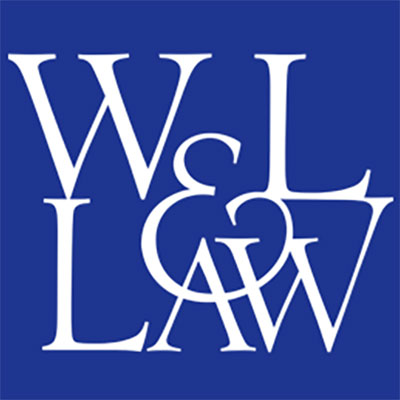Benefits and Drawbacks of Plain Legal English
DOI:
https://doi.org/10.56498/1212024615Abstract
The Plain Language Movement acted as the catalyst for the Plain Legal English Movement aimed at
questioning and challenging the clarity of legal language. Mellinkoff’s The Language of the Law
(1963) is one of the most influential publications to emphasise the defects of legal language. In the
search for precision and caution, legal English tends to be verbose, archaic and redundant (Wydick
1978; Tiersma 1999; Williams 2004 and 2011). Tiersma (1999, p. 51) posits that “lawyers seem to
have developed linguistic quirks that have little communicative function and serve mainly to mark
them as members of the legal fraternity”. Legal writing, in fact, is claimed to be “the largest body of
poorly written literature ever created” (Lindsey 1990, p. 2).
The literature has long addressed and discussed legalese, which is an intricate aspect of the
language of the law. Its features are varied, such as nominalisation (Tiersma 1999, pp. 77-79;
Williams 2004, p. 115; Coulthard and Johnson 2010, p. 10), the frequent use of passive forms
(Williams 2004, p. 114), long sentences characterised by syntactic discontinuities and embeddings
(Williams 2004, pp. 113-114; Williams and Milizia 2008, p. 2215; Coulthard and Johnson 2010, p.
22), lack of punctuation (Williams 2004, p. 113; Coulthard and Johnson 2007, p. 45) and deictic
elements where pronouns, particles and adverbs refer back or forward to concepts, things or people
mentioned in the text (Abate 1998, pp. 14-16; Bhatia 2010: 28). Furthermore, legal language is
male-gendered and characterised by sexism as it still uses masculine generics (Griffith 1988: 135;
6 INTERNATIONAL JOURNAL OF LAW, LANGUAGE & DISCOURSE, VOL. 12, NO.1 – JUNE 2024.
Leonardi 2021). Some scholars highlight the ambiguity in the use of modal verbs (for example,
“shall” is used to express obligations or prohibitions instead of future actions or scenarios) (Tiersma
1999). There are also archaic expressions sourced from Latin and French, which may be
incomprehensible to laypersons (Laster 2001: 246; Bhatia 2010, pp. 26-29).
References
Abate, S. C. (1998). Il documento legale anglosassone. [The Anglo-Saxon legal document]. Hoepli.
Adler M. (2012). The Plain Language Movement. In P. Tiersma and L. Solan (Eds.), The Oxford
Handbook of Language and Law (pp. 67-83). Oxford University Press.
Bhatia, K. L. (2010). Textbook on legal language and legal writing. Universal Law Publishing Co.
Pvt. Ltd.
Coulthard, M., & Johnson, A. (2007). An introduction to forensic linguistics – language in evidence.
Routledge.
Coulthard, M., & Johnson, A. (2010). The Routledge Handbook of Forensic Linguistics. Routledge.
Gardner, J. (2016). Misused English words and expressions in EU publications. European Court of
Auditors.
Giampieri, P., & Harper, M. (2023). Legal Translation: from dictionary to corpus. Le Penseur.
Gotti, M. (2016). Linguistic Features of Legal Texts: Translation Issues. Statute Law Review, 37(2),
-155.
Griffith, M.E. (1988). Sexism, Language, and the Law. West Virginia Law Review, 91(1), 125-151.
Laster, K. (2001). Law as Culture. The Federation Press.
INTERNATIONAL JOURNAL OF LAW, LANGUAGE & DISCOURSE, VOL. 12, NO.1 – JUNE 2024. 9
Leonardi, V. (2021). United in diversity and trapped in a paradox: (Il)legal gender equality in the
EU legal documents and their translations. In E. Federici & S. Maci (Eds.), Gender Issues:
Translating and Mediating Languages, Cultures and Societies (pp. 243-266). Peter Lang.
Lindsey, J. M. (1990). The Legal Writing Malady: Causes and Cures. New York Law Journal, 1.
Maci, S. (2014). What Does He Think This Is? The Court of Human Rights or the United Nations?.
(Plain) Language in the Written Memories of Arbitral Proceedings: A Cross-Cultural Case
Study. European Journal of Law Reform, 16(3), 572-596.
Mellinkoff, D. (1963).The Language of the Law. Little, Brown and Company.
Solan, M. L. (1993). The language of judges. The University of Chicago Press.
Tessuto, G. (2008a). Drafting Laws in UK Settings: Implementing Plain Language and Discourse?
Atti del Convegno Internazionale Il Drafting Internazionale, organizzato dal Dipartimento
di Diritto Costituzionale Italiano e Comparato della Facoltà di Giurisprudenza
dell’Università degli Studi di Napoli Federico II.
Tessuto, G. (2008b). Discourse System in English Arbitration Award. In V. K. Bhatia, C. Candlin &
J. Engberg (Eds.), Legal Discourse across Cultures and Systems (pp. 181-197). Hong Kong
University Press.
Tiersma, P. (1999). Legal language. The University of Chicago Press.
Wydick R. C. (1978). Plain English for Lawyers. California Law Review, 66(4), 727-765.
Williams, C. (2004). Legal English and Plain Language: an introduction. ESP Across Culture, 1,
-124.
Williams, C. (2008). Legal English or legal Englishes? Differences in drafting techniques in the
English-speaking world. Federalismi.it. Rivista di Diritto Pubblico Italiano, Comunitario e
Comparato. 1, 1-13.
Williams, C. (2011). Legal English and Plain language: an update. ESP Across Cultures, 8, 139-151.
Williams, C. (2023). The Impact of Plain Language on Legal English in the United Kingdom.
Routledge.
Williams, C., & Milizia, D. (2008). How (un)readable is the European Constitution? A comparison
of the English version and the Italian version. In A. Cannone (Ed.), Studi in Onore del Prof.
Vincenzo Starace (pp. 2209-2227). Editoriale Scientifica.
Ződi, Z. (2019). The limits of plain legal language: Understanding the comprehensible style in law.
Downloads
Published
Issue
Section
License
Copyright (c) 2024 Authors retain copyright and grant the journal right of first publication with the work simultaneously licensed under a Creative Commons Attribution (CC-BY) 4.0 License that allows others to share the work with an acknowledgment of the work’s authorship and initial publication in this journal.

This work is licensed under a Creative Commons Attribution 4.0 International License.













